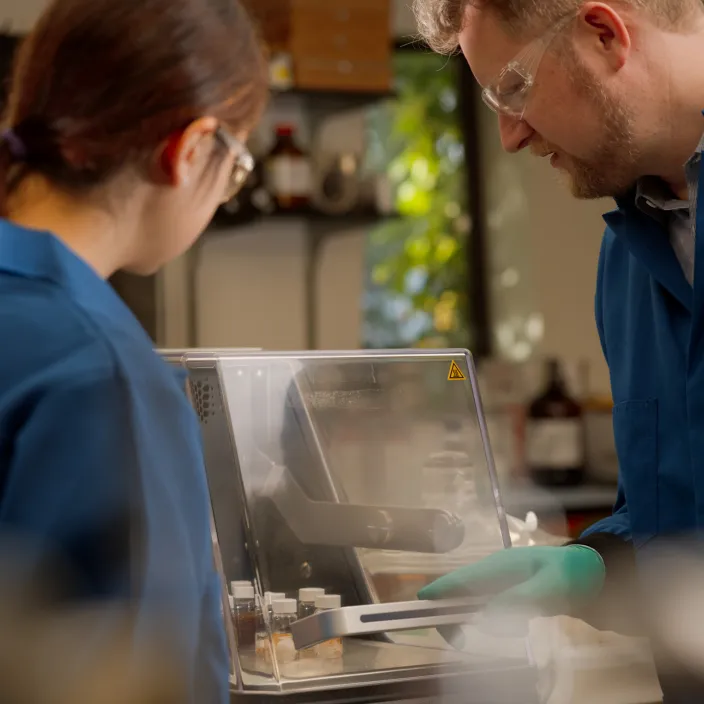Artificial sweetener in vaping products leaves a sour note
When researchers from Yale and Duke University analyzed numerous brands of popular vaping products, they found that a majority contained neotame, an artificial sweetener that is 7,000-13,000 times sweeter than table sugar. In addition to concerns about whether the chemical is contained in many products, “little to nothing” is known about its health effects when inhaled.
“In fact, we don’t even have a good sense of how much neotame that is present in the liquids actually ends up in the aerosol of an e-cigarette,” said Hanno Erythropel, the lead author of the paper. “And how much of the neotame in the aerosol reaches the sweet taste receptors to actually create a sweet sensation? These are complex questions that are influenced by the type of e-cigarette, the power output of the device, the build of the device, and the puffing behavior of the user, to name just a few.” The results of the study were published today in JAMA.
Erythropel, a research scientist in the lab of Julie Zimmerman, professor of chemical and environmental engineering and of the environment, discussed the paper’s findings in more detail:
Read more • Approximately 4 minutesWhat would you say is the major finding from this article?
In this study, we found that all tested popular disposable e-cigarettes contained the potent artificial sweetener neotame. The only exception were products that have received U.S. Food and Drug Administration marketing authorization orders, which did not contain neotame. This raises the question about whether neotame increases the addiction potential of the products, and what health effects neotame and its potential breakdown products may have on users.
What is the concern about the use of neotame in e-cigarettes, and how it’s listed on the products you tested?

To start, none of the packing or labels on the tested devices mentioned neotame. There are two specific concerns about the finding: How does it affect the potential for addiction to the product, and what are the product’s adverse health effects when inhaled?
We know that sweet-flavored tobacco products that smell like fruits, dessert, or sweets are more appealing and that especially youth and young adults prefer these kinds of products. Highly potent neotame would likely add sweetness to the product – why would it be added otherwise? So does neotame presence increase the appeal of these products even further? That question is relevant as that could increase use especially in youth and young adults, and thus the potential for nicotine addiction, because most e-cigarettes do contain nicotine.
The other question is about potential user adverse health effects: Neotame has been authorized as a food additive, but not for use in vaping products. Eating versus inhaling something is very different; we call this the route of exposure. There are many examples in which chemicals are safe for eating but not for inhalation. Neotame’s inhalational toxicity has not been tested, especially over longer timeframes. Also, e-cigarettes work by heating up a liquid to produce the aerosol that is inhaled. But, at the moment, we simply don’t know if the heating process of neotame-containing e-liquid can result in chemical reactions that could create new chemical compounds with potential toxicological adverse health effects. That is something really important to look into!
By the way, the same is true for most of the other flavorants in e-cigarettes that are used to create all the funky flavors that e-cigarettes come in. In fact, the U.S. Flavor & Extract Manufacturers Association (FEMA) has also made this very clear: “None of the primary safety assessment programs for flavors… evaluate flavor ingredients for use in products other than human food.”
How can you build on these findings?
For the toxicity question, we need to have a better understanding of what actual exposures to users are – the question of “carryover” from liquid to aerosol. Also: How does neotame break down when heated and what kinds of chemical are produced as that happens? Then, toxicity testing would need to be carried out, for example in special cell assays or if necessary, in animal studies. For the addiction potential question, a whole set of other experiments would be needed to find out how users rate the appeal and liking of neotame-containing e-cigarettes.
Other authors of the paper are Sairam V. Jabba, Peter Silinski, and Sven E. Jordt of Duke University; Victor Garcia-Gallet of Rensselaer Polytechnic Institute; and Remi A. Mellinghoff and Julie B. Zimmerman.
The research reported in this publication was supported by grant number U54DA036151 from the National Institute on Drug Abuse (NIDA) and FDA Center for Tobacco Products (CTP). The content is solely the responsibility of the authors and does not necessarily represent the official views of the NIH or the Food and Drug Administration.
More Details
Published Date
Jun 2, 2025


